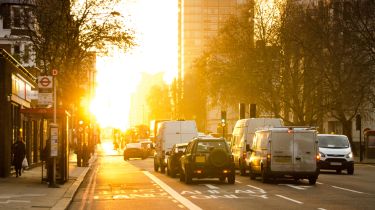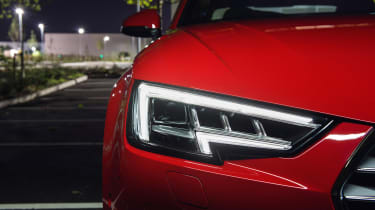Parking lights: how do they work and what are they for?
Parking lights are different from sidelights, which are legally required. Here’s everything you need to know about them

Your car definitely has sidelights fitted – and they need to be working, too, in order for your vehicle to be roadworthy in the eyes of the law. Parking lights are often the same lights, but they need to be displayed when parked at the side of the road.
Sidelights are designed to provide visibility of your car for other road users, usually at dusk or in low-light places such as tunnels or in wooded areas. They’re usually accessed using a switch that also includes the operation of the headlights – one click for sidelights, and two clicks for headlights is the usual formation.
 The best cars for snow and winter driving 2025
The best cars for snow and winter driving 2025
When you switch on the sidelights, your number plate lamps also come on, as do the rear lights so that people behind can see your car more easily as well.
If you’re parked on a road, or in a lay-by on a road with a speed limit greater than 30mph (48km/h), you should switch on your sidelights, which then act as ‘parking lights’ so that you can be seen at the side of the road.
Some models allow you to display lights on one side – the side that faces traffic. Usually this is activated by indicating in the desired direction, which will then also turn on the lights on that side. Sometimes there are separate switches for parking lights, though.
More common these days are Daytime Running Lights (DRLs) – all new cars have them, and many used models will do as well. They are always on, hence the name, and they mean that your car is always displaying a light no matter what – although many models have them only at the front.
Makers must fit these lights to new cars, because studies found there was a significant safety benefit to vehicles having their lights on all the time, no matter what the natural lighting conditions are.
Many manufacturers have adopted LED DRLs as a striking way to help their models stand out from the crowd. They shape these to form motifs that help create a bold family identity, as well as improving safety.
How do I use parking lights?
If the vehicle you own was built before 2011, it’s likely you will need to turn on its sidelights manually. To check, simply start your car’s engine, ensure the gearbox is in neutral (or ‘Park’ if it is an automatic) and that the handbrake is fully applied, then hop out to see whether the sidelights are on or off. If they are off, you’ll need to turn either the lighting-column stalk or a selector knob on the dashboard (usually above your right knee) to the position between off and dipped headlights.
Many newer cars have light sensors that will automatically turn the sidelights on, followed by the dipped-beam headlights as the ambient outdoor light progressively dims. For this function to be enabled, the lighting control switch will need to be in the ‘automatic’ position, which is often marked with an illuminated ‘A’.
When the sidelights are turned on, the symbol in the image below will usually appear within the instrument cluster. Sidelights must always be lit during the hours of darkness – defined in the Road Vehicles Lighting Regulations 1989 as half an hour before sunrise and half an hour after sunset.

When should I use parking lights?
According to the Highway Code (section 249) all vehicles are required to display parking lights when parked either on a road or in a lay-by on a road with a speed limit greater than 30mph. This makes it impractical to park on faster roads at night for extended periods, because leaving parking lights on for too long is likely to drain the car’s battery.
When parked on a road with a speed limit of 30mph or less, you don’t need to turn on parking lights as long as the vehicle is parked in a recognised parking place or lay-by, and it is at least 10 metres from a junction, close to the kerb and facing in the direction of the traffic flow.
It’s important to note that the Highway Code also states you must not park on a road at night facing against the direction of the traffic flow, unless the car is within a recognised parking space.
The Highway Code also advises motorists not to park on the road in fog unless it’s unavoidable, and to leave parking lights on in this situation.

Parking lights and the MoT
It’s a legal requirement that all cars driven on UK roads have a full set of working sidelights. This means any vehicle submitted for its annual (from its third birthday onwards) MoT test will fail if any of the front or rear sidelights or number plate bulbs are faulty.
We recommend following our MoT checklist a few days before your car’s test, because replacing a bulb yourself is often a very cheap and easy task that can save you an unexpected bill at the garage.
Read our guide to the best car headlight bulbs to buy this year.
Most Popular
Tips & advice

Car dashboard warning lights: what does each symbol mean?

Electric car charging stations: public networks, charger types, apps and maps






